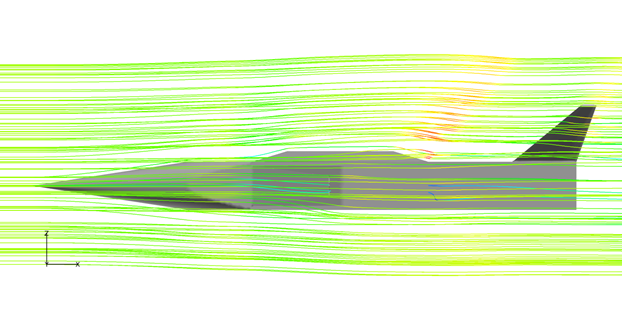Research on the future transportation technology
JAXA Supercomputer System Annual Report April 2016-March 2017
Report Number: R16E0074
- Responsible Representative: Koichi Okita(Research and Development Directorate, Unit IV)
- Contact Information: Susumu Hasegawa(hasegawa.susumu@jaxa.jp)
- Members: Susumu Hasegawa
- Subject Category: Space(Space transportation)
Abstract
The aerodynamic characteristics of the airframe and the engine of the spaceplane which integrates the them will be clarified. Taking into consideration of the movement of the center of gravity, the aerodynamic center and the change of the engine thrust under the various flight conditions from take-off to high speed, aerodynamic characteristics of the spaceplane were investigated numerically and experimentally.
Goal
The establishment of technologies for airframe/engine integration of the spaceplane for the realization of future space transportation technology
Objective
The coupled aerodynamic characteristics between airframe and engine of the spaceplane on the flight condition from takeoff to high speed was to be elucidated.
References and Links
N/A
Use of the Supercomputer
The comparison between the experimental data obtained by wind tunnel tests and the numerical results were conducted and verified. After the verifications of numerical results, various aerodynamic data which are difficult to obtain by experiments are computed and analyzed by CFD.
Necessity of the Supercomputer
The number of wind tunnel tests is limited, and the data obtained are limited. Therefore, after verification of numerical results, data which are difficult to obtain by wind tunnel test can be obtained. By using higher-performance computer, more reliable data can be obtained and the development of spaceplane technology are accelerated.
Achievements of the Year
Correspondent numerical calculations of spaceplane performed by wind tunnel experiment were carried out. The features of aerodynamic coefficients are consistent, but some data do not agree quantitatively. Larger data analysis will be conducted and its data are verified. After that, it is planned to perform numerical analysis which are difficult to obtain in the wind tunnel tests.
Publications
Presentations
1) Susumu Hasegawa, Takeshi Kanda,’Preliminary Numerical Simulation of Flow around Spaceplane for Airframe Engine Integration’, ISTS 31th, Matsuyama, Japan, Jun 9, 2017.
Computational Information
- Parallelization Methods: Process Parallelization
- Process Parallelization Methods: MPI
- Thread Parallelization Methods: n/a
- Number of Processes: 128
- Number of Threads per Process: 1
- Number of Nodes Used: 4
- Elapsed Time per Case (Hours): 256
- Number of Cases: 100
Resources Used
Total Amount of Virtual Cost(Yen): 968,378
Breakdown List by Resources
| System Name | Amount of Core Time(core x hours) | Virtual Cost(Yen) |
|---|---|---|
| SORA-MA | 29,829.72 | 49,062 |
| SORA-PP | 101,166.72 | 863,761 |
| SORA-LM | 0.00 | 0 |
| SORA-TPP | 0.00 | 0 |
| File System Name | Storage assigned(GiB) | Virtual Cost(Yen) |
|---|---|---|
| /home | 6.68 | 62 |
| /data | 4,768.37 | 44,980 |
| /ltmp | 976.56 | 9,211 |
| Archiving System Name | Storage used(TiB) | Virtual Cost(Yen) |
|---|---|---|
| J-SPACE | 0.42 | 1,299 |
Note: Virtual Cost=amount of cost, using the unit price list of JAXA Facility Utilization program(2016)
JAXA Supercomputer System Annual Report April 2016-March 2017



